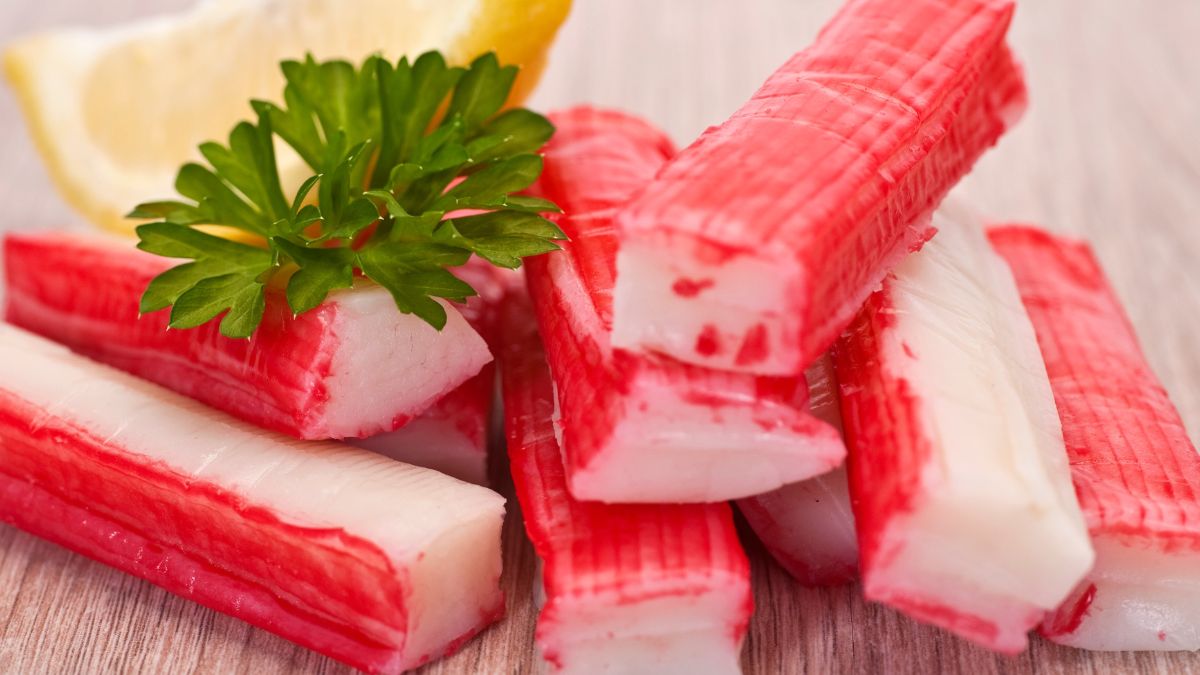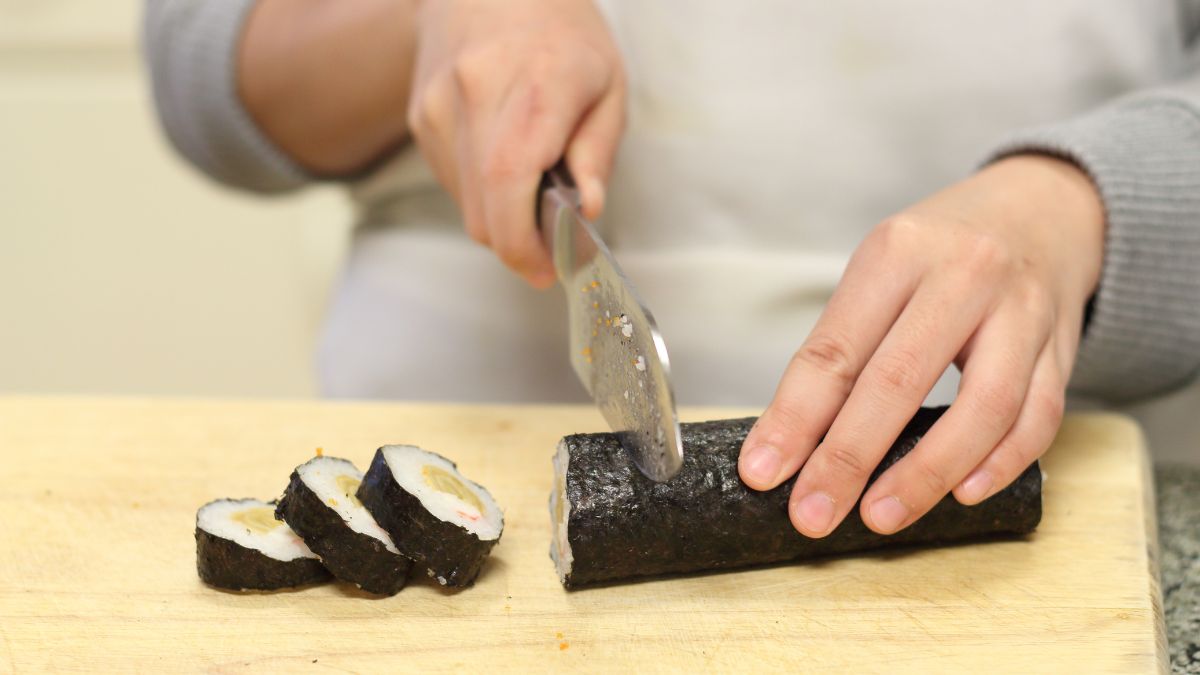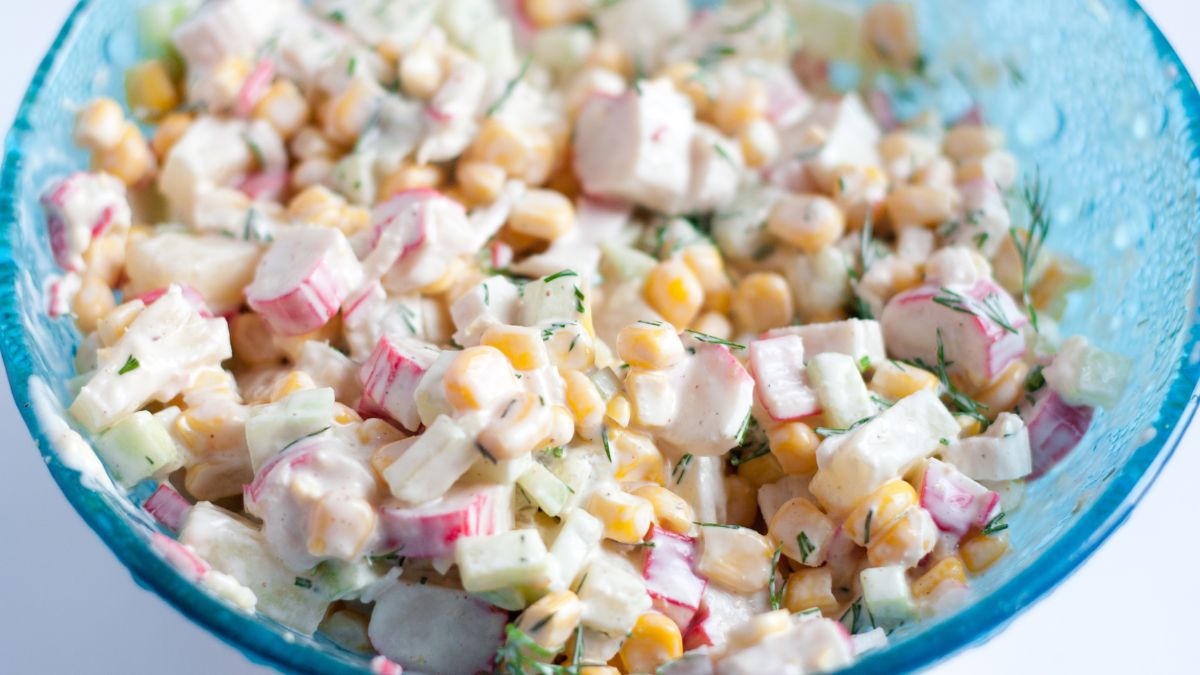What Does Surimi Mean & What to Do with It?

As a regular feature of my fridge, surimi has become one of my go-to ingredients when I want fast seafood. These little guys have made my job much easier since they require very little time and effort and give delicious results. Still, many don’t know what surimi is precisely, so I decided to say a few words about it. So, what does surimi mean?
Surimi is a processed seafood product made by mincing and washing lean white fish such as pollock, tilapia, or cod. The resulting paste is then mixed with starch, salt, sugar, and flavorings to create the final product known as surimi. It is a Japanese term that literally means “ground meat” or “minced meat.”
Surimi is often confused for crabs due to how they are advertised, so you may be disappointed if you buy surimi and expect crabs. Still, knowing what surimi is and how to use it is a very nifty trick to make yourself a very delicious snack. In this article, I will tell you all about surimi and how to prepare it.
How to Pronounce Surimi?
“Surimi” is pronounced just like it’s written, i.e., “soo-ree-mee.” Still, as simple as it sounds, it confuses people, as they tend to pronounce it differently according to Western pronunciation rules. In this particular case, you should read it according to the Japanese pronunciation rules.
Japanese words are often confusing to pronounce, and many people struggle with how to pronounce surimi, but it really isn’t a tricky word.
What Is Surimi Made Of?
Surimi is a fish derivative containing fish and other ingredients. Essentially, surimi is a type of processed seafood product made from minced white fish, typically Alaskan Pollock, but it can be made with other types of white fish.
The fish is first filleted, and then the flesh is minced and washed repeatedly to remove any impurities and create a paste. The paste is then mixed with other ingredients such as starch, sugar, egg whites, and flavorings to create a versatile ingredient that can be used in various dishes.
Since processed fish products are less familiar and common in the Western market, the best way to describe surimi would be something like fish sausages. Still, the difference between surimi and sausages is huge, but the principle is similar.
Surimi has a mild flavor and a texture similar to that of crab or other shellfish, so soft and creamy. That’s why surimi is a popular substitute for crab meat in many recipes, but it isn’t crab meat.
Does Surimi Contain Eggs?
Although eggs are not a standard part of the surimi-making process, some may contain eggs. Depending on the producer, the recipe varies, and some may contain eggs or other ingredients that others do not. The minced white fish and cornstarch are the standard ingredients, while the other ingredients may vary.
I’ve had surimi that was more on the saltier side, some were sweeter than I expected, and I’ve had some that were neutral and somewhat bland. So, the manufacturer decides the taste of the surimi.
Egg whites are sometimes added to the paste to improve its texture and binding properties. So, you could say that egg-containing surimi is the fancier kind. But liking or not liking it is highly subjective.
I prefer the one which contains eggs, but that’s just me. If you have any egg intolerance or you just don’t like eggs, always check the packaging to see if your surimi contains eggs because they often do.
How to Cook Surimi?

I like surimi because it is very easy to work with. It is a very versatile ingredient that does equally well when cooked in various ways. Since surimi is precooked, it takes very little time to be ready to eat, making it perfect when you are in a rush.
You can cook it by boiling it, and contrary to the popular belief that it falls apart when boiled, I’m here to tell you that that doesn’t have to happen. The trick is to add it to boiling water, not cold. This way, it will stay in the water for a significantly shorter period, preventing it from falling apart.
The cooking time is usually between two and three minutes, after which you just drain it, and it’s ready to serve.
Another way to cook surimi is to stir-fry it, and this is my favorite method. Many think that stir-frying results in surimi stuck to the pan, but again, it isn’t true. When stir-frying, the trick is to pop it in hot oil so that it starts cooking immediately.
Sizzle for one to two minutes and add other ingredients. I always make sure not to add too much oil; just a few drops will do nicely, but be careful about the pan. Choose a non-stick pan or a wok for best results.
Grilling is another excellent way to cook it. Drizzle some oil on your grill and let the surimi sizzle. It takes about one to two minutes per side, and then it is ready to serve.
If you want your surimi without extra oil, baking is the best method to cook it. Bake in a preheated oven at 350°F (180°C) for five to ten minutes until lightly browned.
What to Make with Surimi?

Its versatility makes surimi so popular and widely used, so there are many things you can do with it. The most common use is making imitation crab and other seafood products, but you can use it in a variety of other dishes.
You can use surimi to make sushi rolls. I like to mix things up and add other ingredients such as avocado, rice, cucumber, or seaweed. Slice it thinly and use it as a filling for sushi rolls.
You can also use it in countless stir-fries and get a full and rich meal in just a few minutes. Mix it with rice, veggies, or mushrooms, top it with a creamy sauce, or turn it into a taco or burrito.
If you don’t feel particularly creative or don’t want to bother too much, you can always turn it into a seafood dip. Mix the soft surimi with sour cream and mayo and serve it as a dip in combination with crackers or veggies.

Crab salad is another excellent way to use it, and it’s one of my favorites. Cut your surimi into bite-sized pieces and mix it with mayo, onions, lettuce, sweet corn, and cherry tomatoes. Although you won’t use actual crab, the results will be just as delicious.
Or, make surimi sandwiches! I like to add lettuce, cucumbers, and tomatoes to my sandwich, and when I feel especially peckish, I also add melted cheese. Try it; you won’t regret it.
Finally, it’s a great ingredient to use in pasta dishes. Sautee with some garlic and onions and smother it with cream. Add some parmesan on top and perhaps some parsley or cilantro, and you’re good to go.
